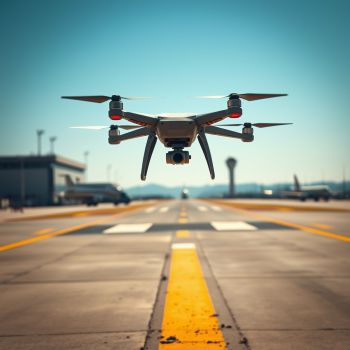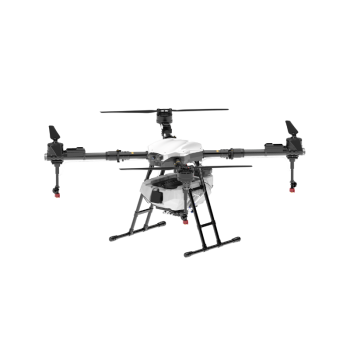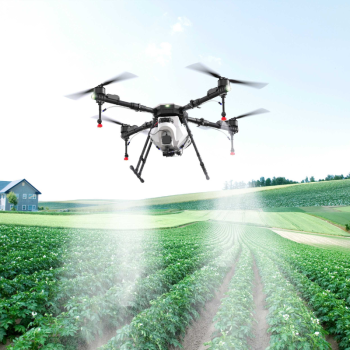Training content for agricultural drone pilots
Comprehensive Training Curriculum for Agricultural Drone Pilots: Skills and Knowledge for Modern Farming
As agricultural drones reshape crop management practices, the demand for skilled pilots equipped to handle advanced technology grows. Training programs must address technical expertise, safety protocols, and regulatory compliance to ensure efficient and sustainable operations. Below, we outline core components of a robust training curriculum tailored to agricultural drone pilots.
Fundamentals of Drone Technology and Flight Mechanics
Understanding the hardware and software powering agricultural drones is foundational for pilots. Training begins with an overview of drone components, including propulsion systems, GPS modules, and onboard sensors like multispectral cameras or LiDAR. Trainees learn how these elements interact to enable stable flight, precise navigation, and data collection.
Flight mechanics form another critical focus. Pilots practice manual and autonomous flight modes, mastering takeoff, landing, and in-flight adjustments. Simulated environments allow learners to experience challenging conditions, such as high winds or low battery scenarios, without real-world risks. Emphasis is placed on interpreting telemetry data—altitude, speed, and battery levels—to maintain operational control.
Sensor calibration and maintenance are equally vital. Pilots learn to troubleshoot issues like image distortion or inaccurate altitude readings, ensuring reliable data for crop analysis. Regular equipment checks, including firmware updates and propeller inspections, are emphasized to prevent mid-mission failures.
Pesticide Application Techniques and Safety Protocols
Agricultural drone pilots must balance efficiency with environmental and human safety during pesticide spraying. Training covers the principles of aerodynamics in spray dispersion, teaching pilots to adjust flight parameters like altitude and speed for optimal droplet size and coverage. Simulations demonstrate how wind direction and temperature affect drift, helping pilots plan applications to minimize off-target contamination.
Personal protective equipment (PPE) usage is non-negotiable. Trainees practice donning respirators, gloves, and coveralls while handling chemicals, adhering to safety standards set by agricultural authorities. Emergency procedures, such as spill containment or exposure treatment, are rehearsed to ensure quick response in critical situations.
Regulatory compliance is another cornerstone. Pilots study local laws governing pesticide use, including buffer zones near water bodies and restricted application times. Documentation practices, such as maintaining spray logs and chemical inventory records, are reinforced to meet audit requirements and support sustainable farming claims.
Data Analysis and Crop Health Monitoring
Modern agricultural drones generate vast amounts of data, requiring pilots to interpret multispectral images, NDVI maps, and thermal readings. Training introduces tools for analyzing vegetation indices, enabling pilots to identify nutrient deficiencies, disease outbreaks, or pest infestations early. Case studies illustrate how abnormal patterns in crop health data correlate with field observations, bridging the gap between technology and practical farming.
Decision-making based on data insights is honed through scenario-based exercises. For example, pilots might compare pre- and post-treatment images to evaluate pesticide efficacy or adjust irrigation schedules using soil moisture maps. Integration with farm management software is also covered, allowing pilots to export data seamlessly for long-term crop planning.
Ethical considerations in data usage are addressed, emphasizing farmer privacy and data security. Pilots learn to anonymize sensitive information and obtain consent before sharing field data with third parties, fostering trust in drone-assisted agriculture.
Advanced Navigation and Autonomous Mission Planning
As drones adopt more autonomous features, pilots must transition from manual operators to mission supervisors. Training explores waypoint navigation, enabling pilots to design efficient flight paths that cover irregularly shaped fields while avoiding obstacles like trees or power lines. Geofencing techniques are taught to restrict drone movement within designated zones, preventing accidental trespassing or collisions.
Battery management is a key aspect of autonomous missions. Pilots calculate optimal battery swap intervals to avoid interruptions during large-scale operations, balancing flight duration with payload capacity. Redundancy systems, such as backup GPS modules or emergency parachutes, are also discussed to enhance mission reliability.
Real-world mission planning exercises challenge pilots to account for variables like sunlight angles or crop canopy density when scheduling flights. For instance, spraying herbicides at midday might reduce efficacy due to high temperatures, prompting pilots to reschedule for cooler morning hours. These decisions underscore the importance of contextual awareness in drone operations.
Soft Skills and Client Communication
Effective communication with farmers and agricultural advisors is essential for drone pilots to deliver actionable insights. Training includes role-playing scenarios where pilots explain technical data in layman’s terms, such as translating NDVI values into fertilization recommendations. Active listening skills are emphasized to align drone operations with the farmer’s goals, whether it’s increasing yield or reducing chemical inputs.
Conflict resolution strategies prepare pilots to handle disagreements, such as disputes over spray drift or data accuracy. By demonstrating transparency in mission planning and results reporting, pilots build credibility and long-term partnerships with clients. Time management and organizational skills are also reinforced to handle multiple projects simultaneously without compromising quality.
Conclusion
Agricultural drone pilot training must evolve alongside technological advancements, integrating technical proficiency with strategic decision-making and ethical practices. By covering drone mechanics, pesticide safety, data analysis, autonomous navigation, and client communication, programs equip pilots to drive innovation in precision agriculture. As the industry grows, continuous learning and adaptation will remain critical to addressing emerging challenges and maximizing the potential of drone technology in farming.




